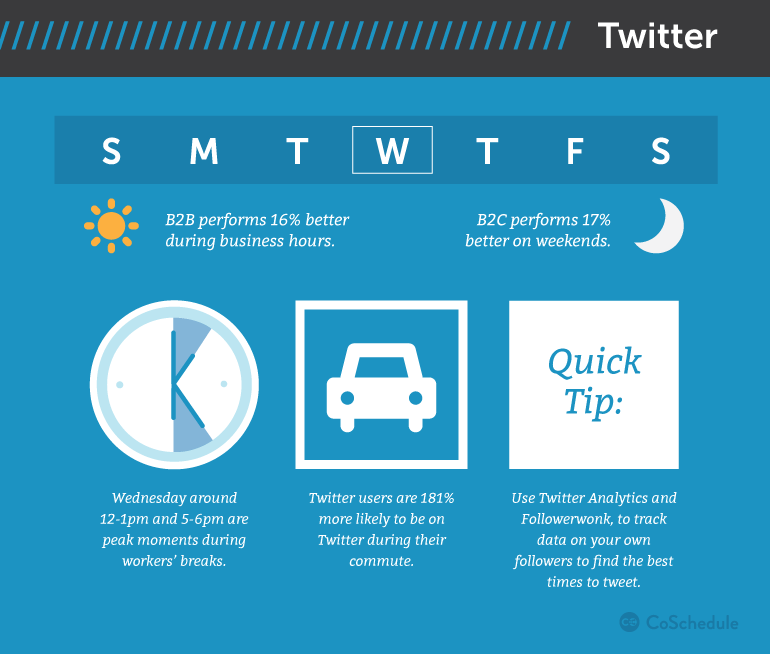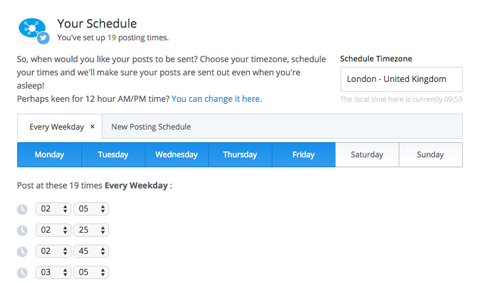
“Forget expensive adverts and sponsorship – if you really want your business to thrive, get tweeting. No other platform offers such profile-boosting abilities.”
In putting together this blog post ‘how to use Twitter to build your voice-over brand’, I realized many people are at different levels and stages in their use of social media. This Twitter marketing blog then is designed to help people at all levels.
Each section contains a few links to well known blog posts. These links provide some excellent advice, guidance on how to improve your use of Twitter, how to gain more followers and how to get more traction with your social media marketing.
For many people their Twitter follower count is the measure they focus on. However, this is not the only metric you need to track, although there is value in the number of followers you have. The number of followers being proportional to how many people are exposed to your Tweets and therefore the possibility of retweets (if people are engaged with you).
However, whilst follower count might be important, it is undoubtably engagement that gives you exposure and helps to build a loyal following.
When using Twitter you need to use a mix of measures to understand how to track success. You need to have clear objectives, metrics and regularly track them. Jay Bauer in his slide deck provides some great insights into how to measure success on social media.
Given 140 characters, how can you make the absolute most of every single word, hashtag, and link in a tweet?
Each social media platform works slightly differently and so there are certain tactics, tips and tools you need to know to get the most out of this powerful social media platform.
#1. Setting Up Twitter – A Newbies Guide
1. Create A Twitter Account
The first thing you’ll need to do is create an account. Go to Twitter.com and using your email, sign up. Twitter will send you an email to confirm that your email is correct.
Now you’ll have to pick a username (don’t worry if you pick a name that you later regret. As a voice-over actor you want to create a personal account, I suggest you try your real name first and if it’s taken then you can be more creative.
#2. Set Up Your Profile
Upload a headshot of yourself, use a good quality, friendly and appealing image. Next, click on your headshot in the upper right hand corner and go to settings and begin checking to make sure that everything is set up accurately (time zone, protect your tweets, language, tweet location, etc.…).
Twitter, like other social media platforms, is indexed by Google and contributes to how you are found on the internet. Therefore, you need to optimize your profile for SEO as well as making it relevant to your audience. To find out more here is a great blog post with some tips on how to do just that – 7 SEO Tips for Twitter To Improve Traffic.
The other part of setting up Twitter is the how you use graphics. There are two parts to this and I have provided some links to help you
- Setting up the graphics for your profile – TwelveSkip gives you some tips and some free templates to download
- Understanding and using the right size images, to post on Twitter – The Ultimate Guide to Social Media Image Sizes
#3. How To Use Twitter The Basics
There are some basic concepts or etiquette to get right:
- Be humble and don’t use it just as a bragging platform.
- Be social. Twitter is about conversation, not a monologue.
- Say “thank you” (a lot).
- Use the @ reply to publicly thank someone.
- Don’t just follow people; engage them.
- Have a sense of humor.
- Refrain from flaming. Use your words to encourage and lift up rather than to tear down. Never underestimate the power of a tweet.
- Don’t follow someone expecting him to follow you back. Follow because you’re interested in what the person has to say. (Conversely, and somewhat ironically, if someone does follow you, it’s courteous to follow back.)
- Be informal. Have fun. Don’t treat it as a chore.
- Don’t hound influential people, begging them to read your blog or retweet you. Win their trust and influence by being remarkable and serving them first. The best strategy for networking is serving others.
- Hold back the urge to tweet too much (more than 20 times per day). If you have a lot of ideas, use a program like Hootsuite or Cotweet to schedule your tweets so that they can be spaced out.
- Listen to your people that follow you and reply.
- Show interest in others, before asking them to care about you (or what you do).
- Ask questions.
- Don’t be afraid to ask for a retweet when it’s really important. (This is best utilized when it’s to help out someone else.)
- Tell the truth.
- Don’t tweet in the third person.
- Don’t retweet people who retweet you, unless you’re responding and quoting them.
- Promote other people’s stuff (blog posts, photos, websites, etc.)
- Talk about other people more than you do about yourself. A good rule of thumb is the 20:1 ratio.
The following are more specific aspects of using Twitter and provide some useful information and research that should help you hone your Twitter skills.
#4. How To Research and Use Hashtags On Twitter
Hashtags across social media are a great way for people to categorize and find topics that they are interested in. While some hashtags don’t last long and quickly fade away (typically fashion and gossip hashtags), others become an established way of connecting people and finding what is the latest news on that topic.
The main voice-over and related hashtags are: #VO #Voice #Voiceover #VoiceArtist #VoiceActor #VoiceActing
- Why use hashtags on Twitter the research
- Twitters own guide on how to use hashtags
- How to search hashtags across social media
#5. How To Improve Your Tweeting
There are some good pieces of research that can help you improve the what, how and when you tweet. Even with this research though there are oddities within each industry and audience, what works for one doesn’t always translate to another.
When is Your Twitter Audience Online?
Before you consider scheduling your Tweets, you should figure out when your Twitter audience is online.
Buffer wrote a great post about how to work out when your Twitter audience is online: How to find the best times to tweet – the four most accurate methods.
In it, they discuss:
- Using Buffer’s analytics to test out different times of day
- Using tools to identify the best times to tweet
- Using experts’ research to find the best times to tweet
- Looking at what people who are successful and influential on Twitter do.
In terms of using tools, Buffer has made a video about how to connect Followerwonk (which analyzes when your followers are online) with your Buffer account. This helps you to ensure your Tweets are scheduled timings for the best time.
- When is the best time to Tweet (see below)

- Some more stats to help you sent the ideal Tweet
#6. How To Schedule Tweets
When You Do Schedule, Does Anything Positive or Negative Happen?
Social Media Today wrote a blog post about some of the positives and negatives of scheduling Twitter updates.
How to Schedule Posts on Twitter: The Tools
There are lots of possibilities when it comes to scheduling posts on Twitter, so I’ve rounded up the best of the web’s words of wisdom.
Schedule tweets with Hootsuite
Hootsuite is a great tool because it is versatile and manages a range of social networks.
Hootsuite has provided a guide to scheduling tweets here: How to Schedule Tweets and Save Time.
In the post, they talk about three ways to schedule tweets with the tool:
- Manually scheduling tweets
- Bulk scheduling tweets
- Autoscheduling tweets
Set Up a Posting Schedule in Buffer
A scheduling tool like Buffer can save you a lot of time with your Twitter account. Here’s how to set up your own scheduling plan.
After you sign in with your Twitter account, click on the Schedule menu.
Make sure the time zone matches the settings of your Twitter account.

#7. How To Use Images In Tweets To Get More Attention
There is not doubt that nearly all social media has become more visual. Behind this is the rapid acceleration of technology: faster broadband and more powerful devices, a trend that is set to continue.
Using images in Tweets increases engagement by 2-3 times. So the question becomes how do you create visual images that can grab peoples attention and improve your exposure.
Buffer wrote a great blog post on how to create share worthy images which will help you with these techniques.
#8. 10 Twitter Templates You Can Use
Not sure what to tweet to get your followers to engage with you when you’re just getting started with Twitter?
You can always try some tried and true Twitter “formulas” . Just make the following changes to each one:
To use them simply fill in the “blanks” where the [BRACKETS] are.
Edit the #hashtag with the actual hashtag you’d like to use (e.g. #marketingtips). Hashtags make it easy for people to find your tweets when they’re tracking that hashtag, so you can find more relevant followers.
Replace @TwitterHandle with a person’s real Twitter handle (e.g. @gravyforbrain).
#1. Use “The Basic Shared Content Tweet”
[ARTICLE TITLE]: http://url.com #hashtag by @TwitterHandle
This tweet style is the easiest to execute, but many times, people forget to include a relevant hashtag and the author’s Twitter handle.
#2. Try “The Shared Content Tweet With Commentary”
[YOUR OPINION] > [ARTICLE TITLE]: http://url.com #hashtag by @TwitterHandle
[ARTICLE TITLE]: http://url.com #hashtag by @TwitterHandle > [YOUR OPINION]
Like the basic shared content tweet, this tweet includes the article title (or a shortened version), a relevant hashtag, and the author’s Twitter handle.
3. Retweet With Commentary
When you want to retweet someone’s tweet, you’ll simply click the retweet button and share the content with your followers. But if you want to know how to retweet with a little flavor, we’re going to show you.
a) Using the “retweet with comment” feature.
[YOUR OPINION] #hashtag
[EMBEDDED ORIGINAL TWEET]
[YOUR OPINION] #hashtag – RT @TwitterHandle [ARTICLE TITLE] – http://url.com
To retweet with commentary in this way, simply copy and paste the person’s tweet into a brand new tweet, preface the tweet with RT @TwitterHandle, and add commentary to the beginning.
4. Use “The .@TwitterHandle Tweet”
.@TwitterHandle [REST OF TWEET]
If you put someone’s Twitter handle at the very beginning of your tweet, Twitter assumes you’re @replying to that person — so they omit that tweet from showing up on your Twitter followers’ feeds. While this is usually a good thing (otherwise, your feed might get taken over by @reply tweets), there may be times when you want your followers to see that tweet on their feeds. To do that, simply add a period right before their Twitter handle.
5. Try “The Problem/Solution Tweet”
Don’t let your [ASSET] [NEGATIVE RESULT]. Find out how to [GOAL] here: http://url.com #hashtag
Fear is a powerful motivator. Nobody wants to suck, or fail, or flounder, or fall short, or whatever [negative result] you use.
6. Utilize “The Stat or Fact Tweet”
Did you know that [STAT]? http://url.com #hashtag
Don’t just find any old data point here — find something that will really intrigue your target audience.
7. Tweet “The Endorsement Tweet”
I loved this article by @TwitterHandle about [TOPIC] – http://url.com #hashtag
Lots of valuable info on [TOPIC] in this article by @TwitterHandle – http://url.com #hashtag
8. Ask a Question in a Tweet
[QUESTION] #hashtag
[QUESTION] – http://url.com #hashtag
Twitter, like all social networks, is a two-way conversion. You should regularly ask your followers questions.
9. Use “The Tip or Advice Tweet”
[YOUR OWN WORDS OF WISDOM] #hashtag
[QUESTION] #hashtag 1) [ANSWER #1] 2) [ANSWER #2] 3) [ANSWER #3]
Tweets like this are retweeted frequently and can get you more engagement and followers.
10. Try “The Inspiring Quote”
“[QUOTE]” – @TwitterHandle #quote
“[QUOTE]” – [NAME OF PERSON NOT ON TWITTER] #quote
Everyone loves a daily dose of inspiration! It’s difficult to research quotes and find the perfect one, so inspirational quotes are best shared when you randomly come across them and get inspired yourself.
#9. Twitter Analytics
Looking for tools for Twitter you can use for free? Analyzing your Twitter account can identify key areas which affect the number of followers, your engagement and the success you have on Twitter.
When was the last time you analyzed your twitter account?
What are they doing that you should be?
Well, fear no more, I have some free twitter analytics tools for you to help you do a deep dive.
- Klear is great tool identifying influencers and drilling down on profiles of individual people.
- Twitonomy is quite a comprehensive twitter analytics tool that can be used to analyze your account or your competitors.
- Foller.me provides provides other useful statistics.
- Tweetstats provides graphical reports which mainly focussed on the timing of tweets, but also provides some additional information related to the content.
- Twittercounter provides graphs related to the follower growth over time.
- Tweetreach provides you analytics based on up to 50 tweets related to the tweet you sent out.
Summary and Final Thoughts
#1. Adopt a style of writing and tone that is consistent with your brand.
Your tweets don’t need to be constantly amusing, but they do need to have your personality. Your tone should be consistent and should reflect the nature of your brand. Keep your postings short and sweet and remain casual and conversational. Imagine you’re texting a pal rather than writing a formal announcement.
#2. Ensure your tweets are current and topical.
Simple brand statements won’t work. You need to make your conversation relevant to the moment. Join in the national conversation. If Gravy for the Brain wanted to say something about the great character voice work on a new movie, then rather than a bland comment, we might consider an image of one of the actors holding an orange brain for example. That would be a visually arresting image. You could consider creating a questionnaire to encourage engagement. So, you might ask: Which of these computer games has the best voice acting? You could consider giving prizes to the person who gets the most retweets. Remember, It’s not necessarily about the prize value; it’s about the fun.
3. Think and communicate creatively.
Twitter is a noisy place. You cannot afford to be boring so you need to stand out. But how do you do this effectively? Consider using interesting images. Photoshop your pictures to add impact, use GIFs and videos. These will ensure better engagement and traction for your brand than simple text alone.
4. Be brief.
140 characters is already limiting but keeping it brief is very important, especially if you’re talking to a media-savvy younger audience. Tweets under 100 characters will get significantly more traction than those above 100 characters, as will tweets with images and GIF’s.
5. Engage with your followers.
Tweeting about yourself is vital; but you should also take time to respond to your followers and engage in conversation. Look for others who are talking about you and your brand or business and follow them. Analysis can show you what time of day you’re getting the most tweets, follows or responses which helps inform your activity. You can also discover who your most influential followers are and then follow them.

Great post with some excellent info!
Wow! First time I’ve seen Twitter explained so plainly. Still not clear though how it relates to VO exposure. Is the ultimate goal that you’re sending people to your website? Or connection with other VO artists?
The ultimate goal is making lasting relationships with Twitter. 🙂
Interesting to see good advice about using more hashtags, as many articles in the web are saying that using more than 1 hashtag reduces engagement….
Yes, this is shy only of a Twitter manual!
Thanks a lot!
Javier